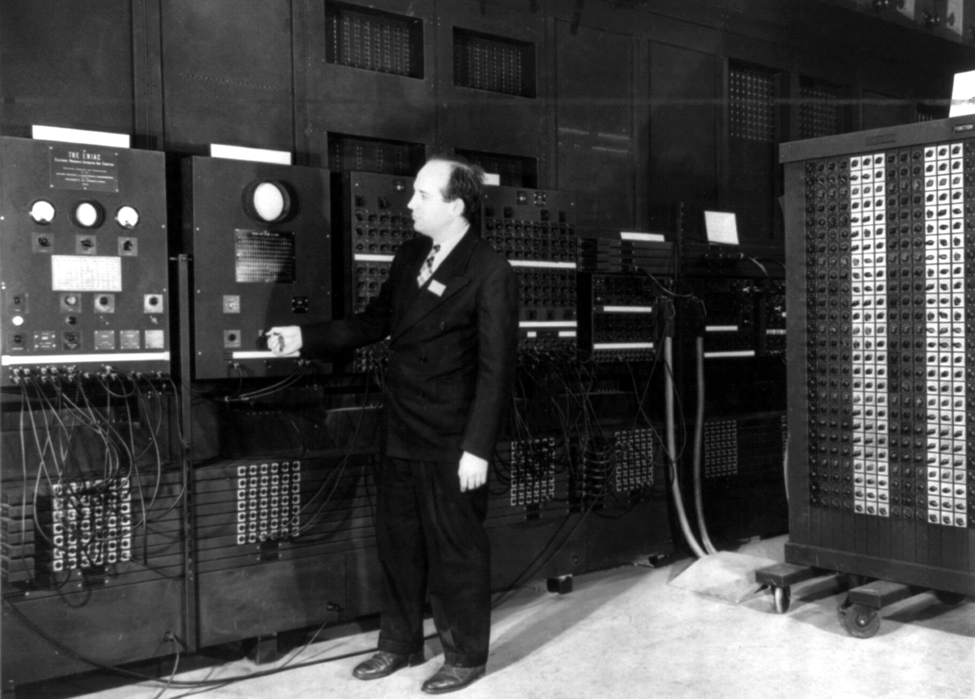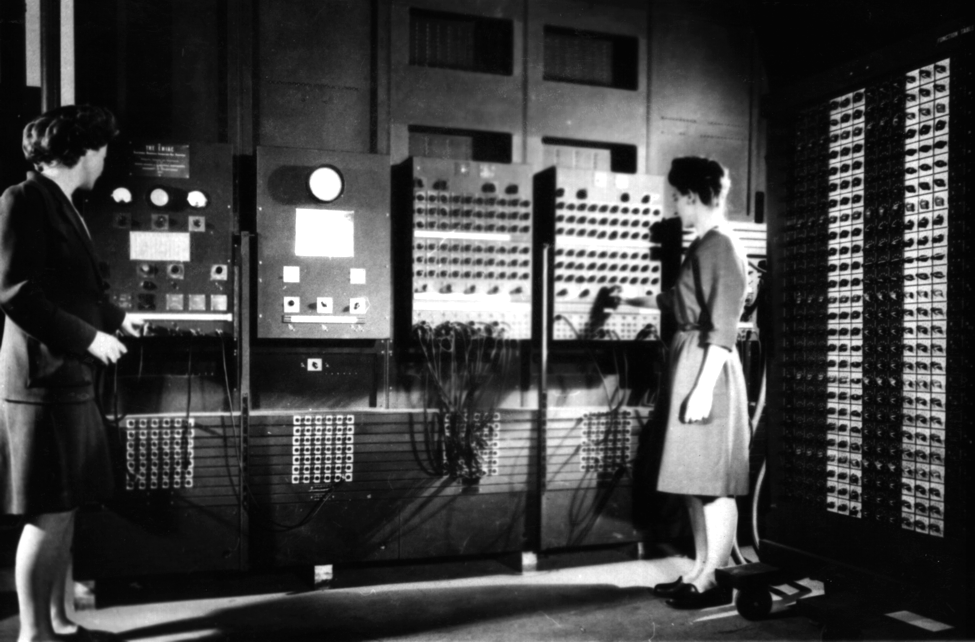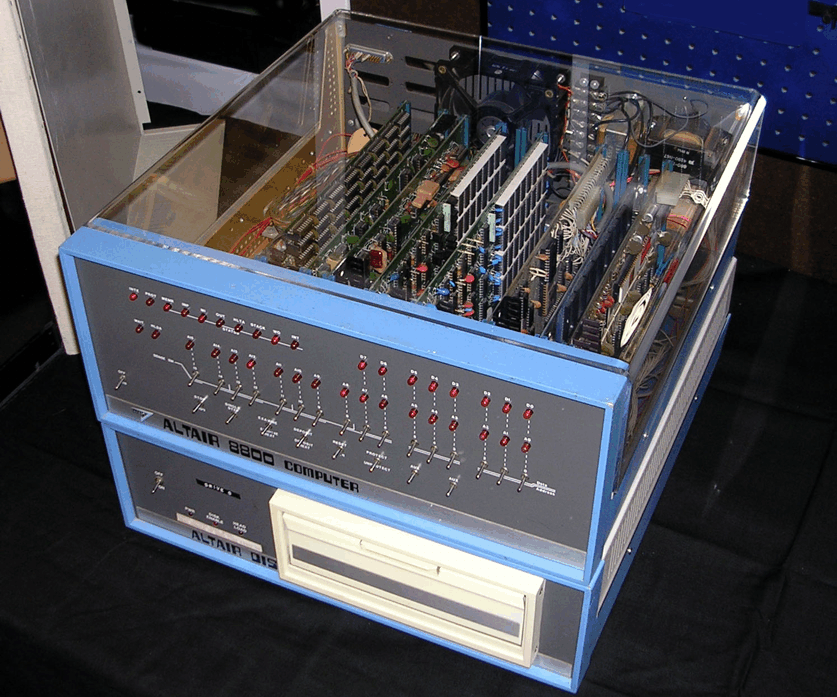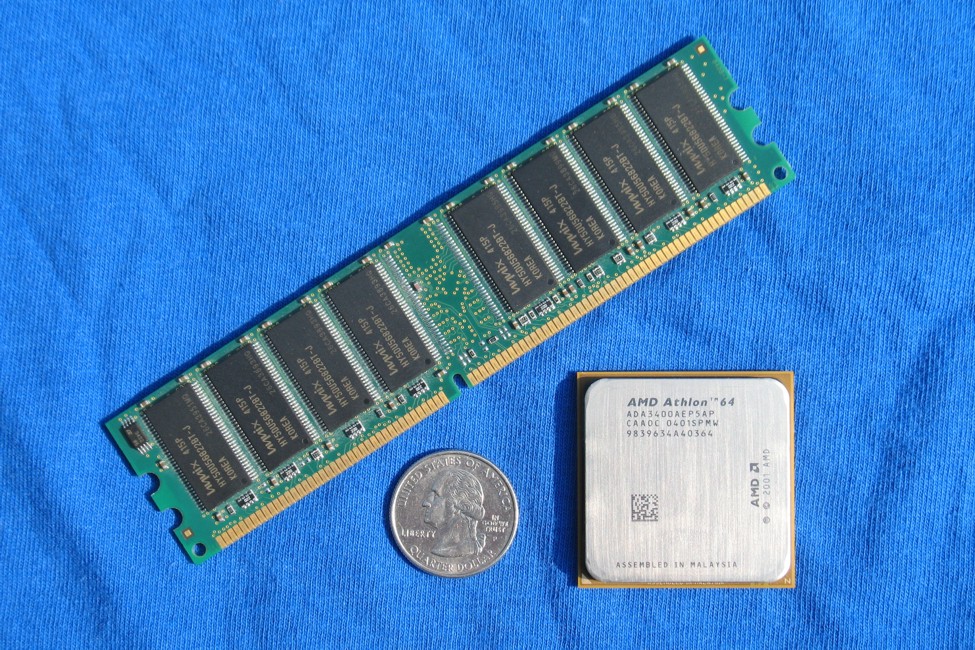The world's first electronic computer, shown below, began operating in 1946.
It was the ENIAC - short for Electronic Numerical Integrator and Calculator.
It was developed at the University of Pennsylvania as part of a U.S. Army
project to speed up complex mathematical calculations for weapons design.

Women mathematicians and programmers were a key part of the team that ran
the ENIAC computer. The system began operating in 1946, and remained
in service until the mid-1950s.

Below: A computer used by the military in the 1960s. This was a big
advance over the ENIAC computer system, but like all computers of that
time, it was large, very expensive, and complicated to operate.


